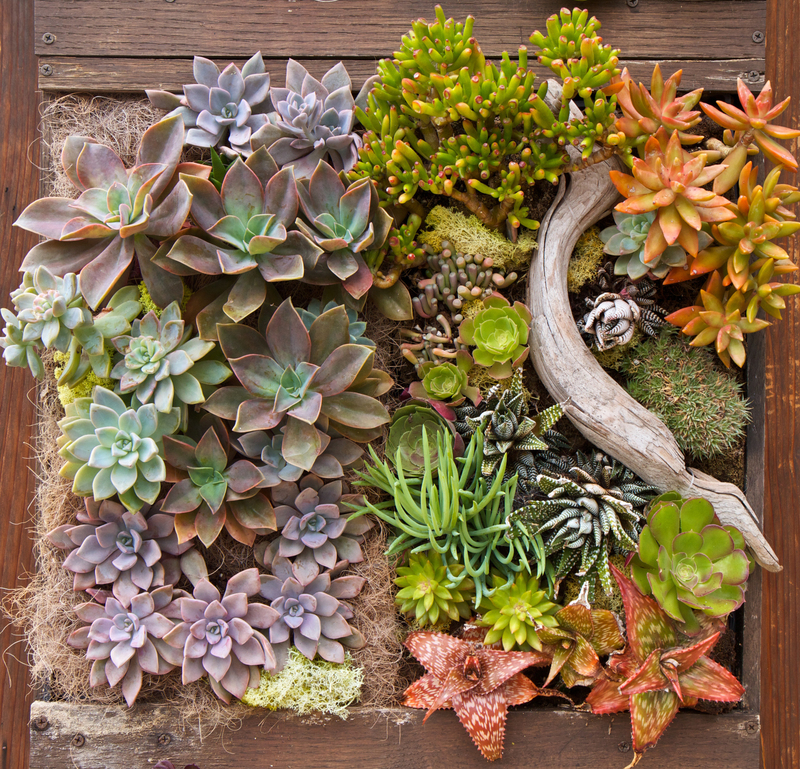Orchid Care: Unveiling the Secrets
Posted on 08/09/2025
Orchid Care: Unveiling the Secrets
Orchids are among the most stunning and sought-after plants worldwide. Their exotic beauty, delicate structure, and grand diversity captivate both novice and expert gardeners alike. However, their reputation for being somewhat tricky to care for has left many enthusiasts wondering about the true secrets of orchid care. In this comprehensive guide, we'll unveil everything you need to know to master the art of orchid care and ensure your orchids thrive for years to come.
Understanding Orchids: An Introduction
The family Orchidaceae is considered one of the largest and most diverse among flowering plants, with over 25,000 species and more than 100,000 hybrids. Orchids grow naturally across every continent except Antarctica, thriving in tropical rainforests and even harsh mountainous regions. Despite their diversity, most orchids grown in homes belong to a handful of easy-to-care-for genera such as Phalaenopsis (Moth Orchids), Cattleya, Oncidium, Dendrobium, and Paphiopedilum (Lady Slippers).
Why are orchids so popular? Their exquisite shapes, vibrant colors, and unique fragrances, along with varieties that can bloom for months, make them the jewels of both homes and gardens. But how do you keep these beauties healthy? It all starts with understanding their natural habits and adapting our care to mimic those conditions as closely as possible.

The Fundamentals of Orchid Care
Despite their reputation, orchids are not as difficult to care for as many people think. The key is to understand a few essential principles. Let's break down the most important aspects:
1. Light: The Magic of Proper Illumination
Light is arguably the most crucial factor in orchid care. Orchids, in their natural habitat, often grow as epiphytes--plants that cling to trees and absorb filtered sunlight through forest canopies. This means most orchids prefer bright, indirect light rather than direct sun.
- Phalaenopsis: Thrives in low to medium light, making them perfect for east or shaded south/west windows.
- Cattleya & Dendrobium: Prefer bright, filtered light. A sheer curtain can help filter sunlight in south-facing windows.
Pro tip: If orchid leaves turn yellowish-green, the plant may be getting too much light, while deep green leaves often signal insufficient light.
2. Watering: The Delicate Balance
Orchids need a careful watering routine. Overwatering is the most common mistake! Most orchid varieties prefer to dry out slightly between waterings. Their thick roots store moisture, much like succulents.
- Check the medium: Only water when the top 1-2 inches feel dry to the touch.
- Water thoroughly, allowing excess water to drain out of the pot. Never let orchids sit in standing water!
- Reduce watering during winter, when most orchids naturally slow their growth.
Secret tip: Use room temperature, dechlorinated water. Avoid using softened water since salts can damage delicate roots.
3. Humidity: Mimic the Tropics
Most orchids thrive in environments with 50-70% humidity. While typical homes are often drier, you can raise humidity in a few simple ways:
- Use a humidity tray with pebbles and water beneath the pot (but not flooding the roots).
- Group orchids together--plants naturally release moisture and keep microclimates humid.
- Mist regularly (in the morning) without soaking the leaves or crown.
Insider's secret: A small humidifier can work wonders for indoor orchid care, especially during winter heating season.
4. Potting Media and Containers
Orchid roots demand excellent aeration and rapid drainage. Regular potting soil suffocates them. Instead, use specialized orchid potting mix--typically made of bark, sphagnum moss, charcoal, or perlite.
- Repot every 1-2 years to refresh the medium, remove decaying roots, and avoid harmful salt buildup.
- Choose a pot with drainage holes--transparent pots help monitor root health.
Pro tip: If your potting mix looks soggy or "spongy," it's time to repot!
5. Fertilization: Feed Lightly, but Regularly
Orchids don't require heavy feeding, but they do benefit from frequent, weak applications. Choose a balanced fertilizer (20-20-20) or an orchid-specialized blend. Apply half the recommended strength every 2-3 weeks when the plant is actively growing.
- Flush the pot every month with plain water to avoid salt buildup.
- Stop fertilizing when orchids are dormant or not in active growth.
Secret: Occasional foliar feeding (spraying diluted fertilizer on leaves) can promote lush, green growth.
Advanced Orchid Care Secrets
Once you've mastered the basics, a few advanced orchid care techniques can help your plants thrive and even re-bloom regularly.
Encouraging Reblooming
Many beginners struggle with getting their orchid to bloom year after year. The biggest secret is understanding the plant's natural cycle:
- Drop night temperatures by 10-15?F for several weeks to trigger flowering, especially for Phalaenopsis and Cattleya.
- Remove old flower spikes after blooming, unless new buds are present, to direct energy to new growth.
- Continue regular care--watering, humidity, and light--during the rest period.
Remember: Patience is key. Some orchids may rest several months before reblooming.
Dealing with Pests and Diseases
Orchids are generally hardy, but can fall prey to pests like mealybugs, scale, spider mites, and fungal infections if their conditions aren't ideal.
- Isolate new plants for at least two weeks before introducing to your collection.
- Wipe leaves regularly with a damp cloth to deter pests.
- Treat minor infestations with insecticidal soap or diluted rubbing alcohol.
- Ensure good airflow and avoid wet leaves to prevent fungal and bacterial spots.
Secret: Cinnamon is a natural fungicide! Sprinkle a small amount on wounds or cut roots to prevent infection.
The Art of Repotting
Repotting is essential for long-term orchid health and encourages new growth:
- Repot when roots outgrow the pot, media breaks down, or after flowering.
- Trim dead roots with sterile scissors, and dust cuts with cinnamon.
- Never repot a flowering orchid, as this may stress the plant and cause blooms to drop.
Insider tip: Spring, just as you see new roots growing, is the best time to repot most orchids.
Common Orchid Care Mistakes (And How to Avoid Them)
Even the most attentive caregivers can make mistakes. Here are some of the most frequent pitfalls:
- Overwatering: Remember, less is more. Let roots breathe!
- Ignoring roots: Healthy orchid roots are firm and green when moist, silvery-white when dry. Mushy, brown roots mean trouble.
- Direct sun placement: Avoid harsh midday sun, which can scorch leaves.
- Crowding plants: Give each orchid good air circulation to prevent disease.
The Benefits of Growing Orchids
There's more to successful orchid care than just beautiful blooms. Caring for orchids offers numerous benefits:
- Aesthetic delight: Orchids add elegance and color to any home or office setting.
- Therapeutic effect: Tending to orchids can reduce stress and improve mood.
- Educational journey: Learning the secrets of orchid cultivation can be deeply rewarding and intellectually stimulating.
- Long bloom times: Some varieties, like Phalaenopsis, can bloom for up to three months or more.
A Few Unusual Orchid Varieties to Try
- Vanda: Brilliantly-colored flowers, thrives in baskets with lots of light and humidity.
- Miltoniopsis: Known as the Pansy Orchid for its cheerful face-like blooms.
- Ludisia discolor (Jewel Orchid): Valued for its stunning, velvety foliage as much as its flowers.

Orchid Care FAQs
How do I know if my orchid needs water?
Check both the potting mix and roots. If the potting mix is dry and roots are silvery, it's time to water. Avoid watering on a fixed schedule; let the plant's condition guide you.
Why are my orchid leaves turning yellow?
Yellow leaves usually indicate either overwatering or too much direct sun. Assess both watering and light placement, and adjust as needed.
What should I do if my orchid isn't flowering?
Ensure the orchid is receiving enough indirect light and consider lowering night temperatures for a few weeks. Healthy roots and proper fertilization also encourage blooms.
Can I use ice cubes to water orchids?
While popular, this method can shock orchids and isn't recommended. It's far better to use room temperature water and ensure thorough soaking and free drainage.
Conclusion: Unlocking the Full Potential of Your Orchid
Orchid care secrets are not nearly as mysterious as many believe. By listening to your plant, following scientific fundamentals, and practicing patience, you can nurture your orchid to healthy growth and spectacular blooms year after year. Remember to:
- Provide bright, filtered light
- Let roots breath with fast-draining media
- Maintain humidity and optimal temperatures
- Feed sparingly, and repot as needed
With these expert tips for orchid care, you're well on your way to unveiling the beauty and resilience of one of nature's most magical plants. Whether you're a beginner or a seasoned gardener, embracing these orchid care strategies will reward you with months--if not years--of breathtaking blossoms. Your orchid journey is just beginning; happy growing!



